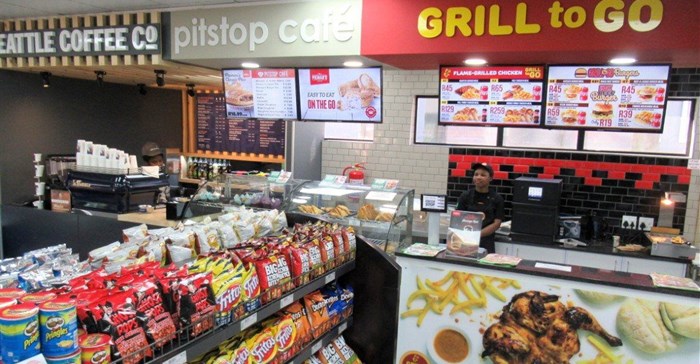
Top stories






More news












“This,” says Steven Heilbron, CEO of Capital Connect, a fintech that offers business funding to South African retailers, “highlights that competitive, flexible fuel retailers still have enormous scope to grow their share of the pie.”
“With fixed margins for fuel, rising operating costs and volatile fuel prices, fuel retail is a challenging business. Convenience has emerged as an essential supplementary income stream for fuel retailers, helping them to weather difficult economic times and get an edge in a competitive market,” says Reggie Sibiya, CEO of the Fuel Retailers Association.
Fuel retailers have diversified their offerings to insulate their businesses against volatile fuel prices, partnering with big-brand retailers and fast-food chains to create compelling shopping hubs.
Heilbron explains that forecourt shopping today isn’t just about selling bread, milk or takeaways to drivers that have stopped to get fuel. “It has also become a shopping destination in its own right for consumers doing their regular shops or buying a quick takeaway when they’re facing load shedding.”
Trade Intelligence’s Forecourt & Convenience Report shows that consumers are increasingly going to forecourt shops for scheduled shops, not just when other stores are closed or when they’re commuting between places.
This trend is particularly pronounced among Gen Zs, with a fifth doing their weekly or monthly shop at a fuel forecourt retailer. “Major supermarket chains have upended the fuel forecourt retail sector in recent years, bringing a wider selection of products, lower prices, more reliable supply chains, and their loyalty programmes to fuel station shops.
“This has enabled fuel station owners to attract a time-strapped consumer with 24X7 retail offerings that give them everything they need at a single stop,” explains Heilbron.
There are still many opportunities for forecourt retail to grow, as Heilbron points out:
Grab-and-go dining is a pandemic trend that has never gone away. Fuel retailers without a takeaway offering can profit by investing in the right franchise for their area. Those with existing takeaway counters can profit by expanding their range or improving quality.
The Forecourt & Convenience Report shows that perceptions around price are the biggest barrier to shopping at forecourts more often. Promotions and specials can be a great way to change this perception.
Fuel forecourt retailers can expand the product range they offer and ensure they have enough stock available of key products, so they don’t lose a sale.
Surveillance cameras to fight shrinkage and shoplifting, digital payments acceptance and other technologies can help fuel forecourt retailers to improve their profitability.
Fuel retailers can use delivery apps such as Uber Eats or MrDFood to target home shoppers.
Some fuel stations are creating workstations with power points and Wi-Fi to encourage people to meet, work and spend money in their forecourt shops.